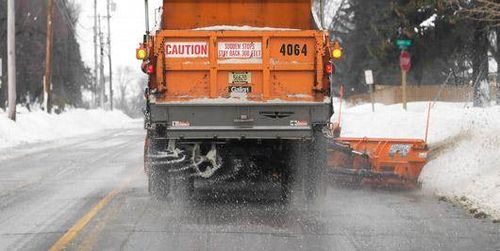
Difference between revisions of "Road salt, smart salting and winter maintenance"
m |
m |
||
| Line 32: | Line 32: | ||
*[[Information on costs and economic impacts of road salt]] | *[[Information on costs and economic impacts of road salt]] | ||
*[[Chloride TMDL projects]] | *[[Chloride TMDL projects]] | ||
| + | *[[Guidance for calculator to estimate chloride loading to groundwater from infiltration]] | ||
*[[Links for Smart Salting (S2) and road salt winter maintenance]] | *[[Links for Smart Salting (S2) and road salt winter maintenance]] | ||
*[[References for Smart Salting (S2) and road salt winter maintenance]] | *[[References for Smart Salting (S2) and road salt winter maintenance]] | ||
Revision as of 02:32, 30 November 2020

MPCA recommends a low-salt diet for Minnesota waters. Doctors tell us to stick to a low-salt diet. Our lakes and streams should follow the same advice. When winter comes and snow and ice build up on Minnesota roads, parking lots, and sidewalks, one of the most common reactions is to apply salt, which contains chloride, a water pollutant.
Salt pollutes. When snow and ice melts, the salt goes with it, washing into our lakes, streams, wetlands, and groundwater. It takes only one teaspoon of road salt to permanently pollute 5 gallons of water. Once in the water, there is no way to remove the chloride, and at high concentrations, chloride can harm fish and plant life. Less is more when it comes to applying road salt.
The following table of contents summarizes pages and sections in the manual that address road salt, Smart Salting (S2), and winter maintenance.
- Overview and impacts of road salt and deicers
- Smart Salting Best Management Practices (BMPs) (coming soon)
- Management tools
- Smart Salting (S2) training program
- Educational resources for Smart Salting (S2)
- Success stories: salt reduction and cost saving examples
- Information on costs and economic impacts of road salt
- Chloride TMDL projects
- Guidance for calculator to estimate chloride loading to groundwater from infiltration
- Links for Smart Salting (S2) and road salt winter maintenance
- References for Smart Salting (S2) and road salt winter maintenance
